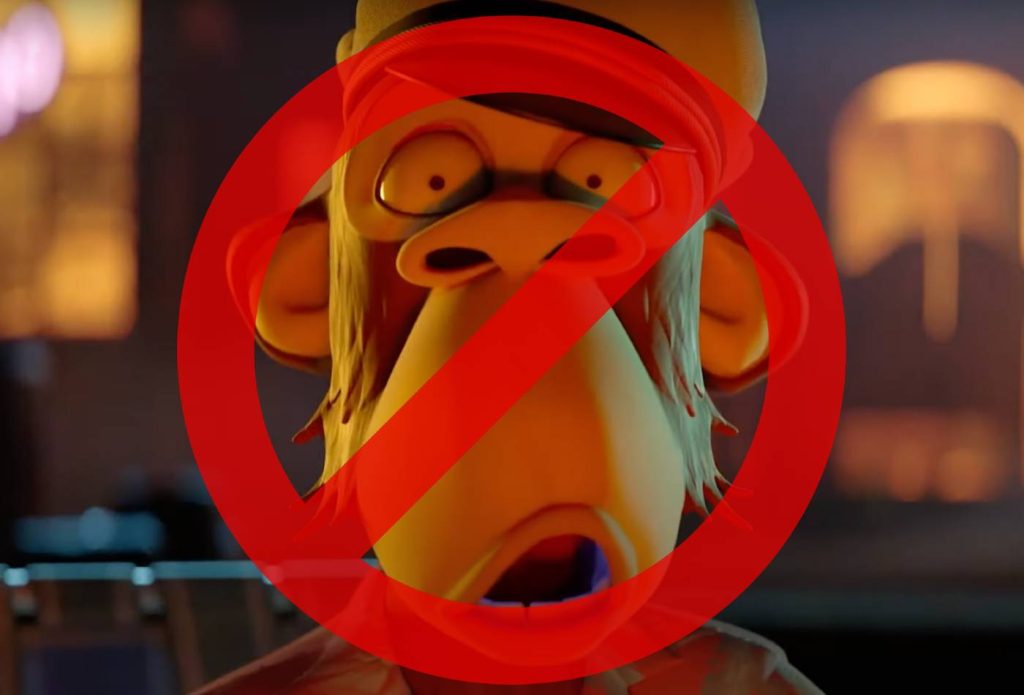This article was last updated on June 10, 2022
Non-fungible tokens or NFTs are all everyone seems to be talking about nowadays. The new form of artwork has taken both the tech and art worlds by storm and revolutionized how many artists monetize their works. However, as with anything new and disruptive, NFTs have also drawn major criticisms over the way they function. Non-fungible tokens have also created a market for stolen artwork, enabling thieves to profit from others’ work. As a result, intense debates and arguments surround the topic online. This has led many who are less acquainted with the new technology to wonder why exactly do so many people hate NFTs.
Table of contents
What Are Non-Fungible Tokens (NFTs)?
Non-fungible tokens, or NFTs for short, are unique digital assets that exist on a blockchain. Each one is a unique code that represents ownership of an asset. These assets can be anything from physical objects to digital artwork, land in a virtual space, or even more abstract concepts like events. Most often, NFTs will represent digital images and other forms of digital artwork.
This code entitles the owner of an NFT to the ownership rights for whatever said NFT represents. If, for example, you bought an NFT of an image, you would be its rightful owner and could do with it as you please. However, this is where things get a bit metaphorical. Although you might own the NFT for an image, this does not stop others from copying or reproducing said image. You would, instead, own a price of code on the blockchain that represents this image. This is the NFT asset that you can then sell or store. Not the image file itself.
Additionally, NFTs do not necessarily constitute copyright or intellectual ownership. While you might be the owner of, say, a Mickey Mouse NFT, that does not give you ownership of the character or any intellectual property associated with it. Unless you receive a legal document that entitles you to the intellectual property as part of the NFT purchase, you would only be the owner of the code representing an image or some other concept.
Why Do People Hate NFTs So Much?
While NFTs have gathered a cult following and have become some of the most popular digital investment options, they have also been the subject of wide criticism and even hate. There are a number of reasons why so many people have negative feelings when it comes to NFTs. These range from their environmental impact to their effect on different markets and industries. Here are some of the top reasons why many people hate NFTs:
Environmental Impact
Because non-fungible tokens exist on a blockchain, they are part of that network’s overall environmental impact. In order to function, a blockchain usually requires an exorbitant amount of computational power. In order to supply this, contributors use computer components or other similar hardware. These, in turn, require electricity to run.
Each time a new NFT is minted (created), or one is transferred between two people, a transaction on the blockchain takes place. This requires electricity in order to be validated by miners. As such, each time something NFT-related happens on the blockchain, it directly translates to more electricity consumption.
This is problematic because blockchains were a serious cause of environmental concern, even before NFTs exploded in popularity. Today, most non-fungible tokens exist on the second-largest blockchain in the world – Ethereum. According to studies, Ethereum is estimated to consume over 112 terawatt-hours of electricity in a year. That is more than what the Netherlands or many other countries consume in the same amount of time. Meanwhile, a single transaction on the network requires as much electricity as is necessary to supply an average US household for 9 days.
While the network is currently in the process of transitioning to a proof-of-stake consensus, which developers promise will reduce electricity consumption by more than 99%, it has yet to do so. This move was announced several years ago and has been delayed several times. As a result, many skeptics have started wondering if it will ever happen.
NFTs Are Unregulated
As a brand new market, the NFT sector is largely unregulated. Additionally, they are part of the larger crypto market, which is itself unregulated. As such, many people argue that fraud and scams run rampant in the NFT space. Because there are no regulatory bodies or overseeing authorities, there are few consequences for the perpetrators.
Scams such as rug pulls are a common occurrence in the space. In such cases, developers will create and heavily promote an NFT project. Usually, they will set forth a vague plan for the future of the project and promise great returns. If the marketing campaign is successful, it often attracts multiple investors. However, once the creators of the project have successfully sold all of their NFTs and pocketed the funds, they will abandon the project. This leaves investors holding the bag with little recourse but to count their losses and move on. Because there is no regulation and the creators of a project can remain anonymous, there is no accountability and little chance of reimbursement.
Meanwhile, because of their anonymous nature and subjective value, NFTs have also been used for money laundering and other illegal activities.
NFTs Might Be A Bubble
Currently, non-fungible tokens are one of the hottest investment options out there. Retail investors from all backgrounds have thrown themselves at the new technology, buying avatars and other digital assets for obscene amounts. NFTs have also been one of the fastest-growing markets in the last couple of years, with millions of transactions taking place each day.
However, many believe that the market is a bubble about to burst. Many skeptics have struggled to see any intrinsic or even superficial value in the technology. Instead, they believe that NFTs are a well-perpetrated scam in which people are selling imaginary assets to each other. They argue that NFTs have no real value or significant purpose. Instead, they only have an inflated value and are used for profiteering. As such, this bubble is inevitably bound to pop, leaving those who have invested in NFTs in the hole.
Theft Of Intellectual Property
While the protection of intellectual property and copyright are some of the main reasons for the existence of NFTs, the tokens have somewhat failed in this regard. Although NFTs can provide holders with the rights to a given IP, they do not actually constitute ownership rights in legal terms. This means that even if you have an NFT for an image, it might not hold up in a court of law.
Additionally, because anyone can create a non-fungible token, many people have created NFTs from artists’ works without their actual consent or knowledge. This means that anyone can download an image of an artist’s work and mint it as an NFT. If they are able to then sell it, they profit from someone else’s work without their knowledge. There have been numerous cases of this occurring, with many artists having their art stolen. This has raised concerns in the art world, where NFTs have been pitched as a reliable solution to copyright issues.
People In The Video Game Industry Hate NFTs
Gamers and professionals in the video game industry have banded together in their hate for NFTs. This is because the technology raises issues that the industry has been struggling with for ages. Chief among these have been large companies’ efforts to increase in-game monetization. The newly introduced concept of play-to-earn games has now come into existence thanks to NFTs. Large companies like Ubisoft have spearheaded advances into the NFT space, promising gamers a world where they can earn money by simply playing games.
However, such moves have had negative results in the past. Whenever a real monetary value is given to in-game items, opportunists will usually flock to a game with the aim of exploiting it. This often results in disruptions of in-game economies and the creation of so-called farms. The latter are large-scale operations where workers are hired to play a game with the aim of farming items which are then sold for real-world money. One of the most notable examples of this are the infamous World of Warcraft gold farms.
In general, gamers see NFTs as yet another means for large publishers to extract money from players. Concepts like DLC, in-game purchases, and loot boxes already exist to serve that purpose. Each one of these has met much resistance and criticism from gamers. NFTs would only add to the problem. This can only have negative results on a game’s enjoyment and playability, as has become apparent throughout history.
Is People’s Hate For NFTs Justified?
As you will see by going on any NFT-related message board or forum, people on both sides have very strong feelings on the subject. Enthusiasts and NFT proponents vehemently defend the technology, claiming that it is a revolutionary technology of the future. They believe that non-fungible tokens will forever change the way people buy and sell assets, from art to various goods and even digital land. As such, non-fungible tokens are the future, and their value and adoption will only increase as time goes by.
Meanwhile, opponents of the technology argue that it does not have any real value or practical uses. Instead, it only serves as a meaningless and imaginary asset that people sell to each other. Skeptics mainly see the negatives of NFTs like their environmental impact, potential for fraud, and history of negative effects on various industries and markets. Additionally, they contend that NFTs fail in their main objective of preserving intellectual property rights and ownership of assets.
In reality, both sides have valid arguments and strong points. NFTs are a brand new technology with lots of potential. While current applications might not be the best use for the technology, we will undoubtedly find more appropriate use cases in the future. Meanwhile, their unregulated nature is simply a result of non-fungible tokens’ relatively young age. Like any other new industry or market, the NFT space is still flying under the radar. However, many governments have taken notice of the industry and will soon catch up by introducing legislation that will enforce regulation.
As for the environmental impact and negative effects of NFTs, that is more closely related to the underlying blockchain technology. Currently, most NFTs exist on the Ethereum network, which uses a proof-of-work consensus, requiring an exorbitant amount of electricity. However, the network is in the process of transitioning over to a proof-of-stake alternative. This is set to see electricity consumption drop by more than 99%. Further future improvements are sure to see this figure drop even more.
Closing Thoughts On People’s Hate For NFTs
Whichever end you stand on regarding NFTs, you should definitely give the other side a chance. NFTs are a promising new technology that could greatly improve our world. However, their current uses and application might not be optimal. Currently, NFTs have a significant environmental impact that is further worsening an already existing crisis. Furthermore, they are unregulated and have been a breeding ground for scams and other forms of fraud.
Given enough time, however, the technology will likely improve. As governments begin regulating the market, fraud will significantly decrease. Meanwhile, improvements to the blockchain will decrease the impact on the environment. As more people learn about and research NFTs, they will find more practical and useful applications for the technology. As such, while NFTs in their current form might not be ideal, their underlying technology has the potential to greatly improve our lives.
Read Next: What Is The Metaverse?





